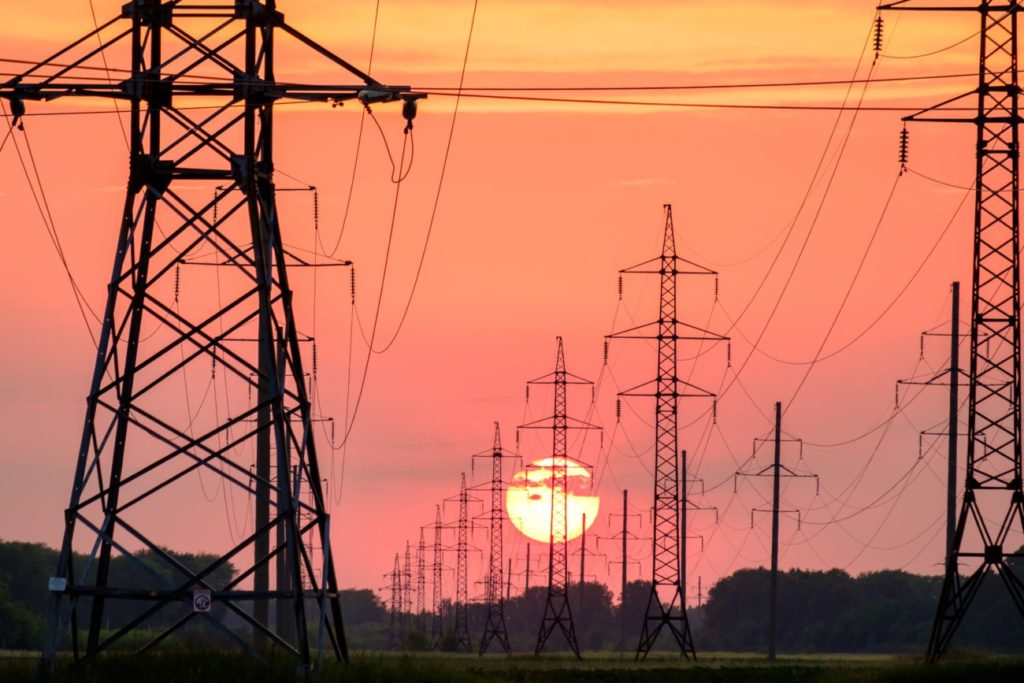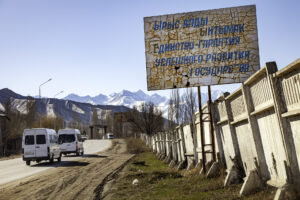A significant power shortage is expected in 2022 for Kyrgyzstan. In order to create power, the country relies on the Toktogul reservoir, which was built on the Naryn river. However, its level sharply decreased over the course of the last months. A worrying situation for a country that relies on this essential power source.This article was originally published on Novastan’s French website on February 8, 2022. It is a crisis situation in Kyrgyzstan. According to Kyrgyz media Kloop, the water level of the Toktogul reservoir, responsible for 40% to 50% of the power production of the country, has levelled down to 9.4 billion cubic meter on 20 January 2022. It figure represents 1.8 billion less than the previous year, as described by Radio Azattyk, the Kyrgyz branch of American media Radio Free Europe. On 2 February this year, the level dropped below 9 billion cubic meter, describes Kyrgyz press agency 24.kg, while quoting measures of the National Energy Holding Company (NEHC). This Monday, 7 February, the level settled to around 8.8 billion cubic meter. If that level were to drop below 5.5 billion cubic meter, then the dam would not be functional.
This situation worries Kyrgyz authorities, because 90% of locally-produced power stems from hydroelectricity, according to figures quoted by Kyrgyz media Akchabar. In order to keep up with the demand, on 28 January 2022 the NEHC appealed to the population to limit their power usage. More concretely, the provider urged people not to use household electrical appliances from 6 PM to 10 PM and from 7 AM to 9 AM. It also recommended varying heating supply sources- for instance using gas or coal. The authorities warned about the possibility of a crisis as soon as October this winter, however, to no avail.
The challenge of water protection while facing increasing electricity usage
At large, the issue remains intractable. Kyrgyzstan needs 15 billion kilowatt-hour (khw) each year, and up to 16 to 17 billion for a comfortable winter, according to Radio Azattyk. Just like 24.kg described in October 2021, winter consumption is particularly high, due to heating appliances being used. Hence there is a delicate winter season ahead, where the transition towards the heating season may be critical regarding the water level stabilization of the Toktogul reservoir. Read more on Novastan: Life by the River: Naryn in Kyrgyzstan The 2021/2022 winter season remained stable in terms of electricity production, according to the Minister of Energy Doskul Bekmurzaev on 18 January, recounts 24.kg. “Everybody is working as per usual. I am confident we will go through the winter period in a stable way”, he added while facing Kyrgyz Members of Parliament. Despite that, on 26 January, member of Parliament Mederbek Aliyev explained it was necessary to improve the electricity consumption culture, according to 24.kg. According to Talaybek Baigaziyev, the president of the NEHC’s administration council, a two to three million kWh increase was recorded in 2021, in comparison with 2020, describes Radio Azattyk. Kyrgyz people use more electricity than the established limit, especially in Bishkek, the capital city of Kyrgyzstan, adds the Kyrgyz media.
A substantial electricity supply planned for 2022
In general, Kyrgyzstan currently has a 6 billion kilowatt-hour electricity deficit, according to Radio Azattyk. And it is not improving anytime soon. Still according to Radio Azattyk, electricity engineers predict that by spring, the water level of the reservoir may drop to six billion cubic meters, a number which has never been so low. In order to maintain the water level of the reservoir, Kyrgyzstan imported electricity through Central Asian neighbour countries. The minister of Energy and Industry, Kubanychbek Turdubayev, stated that Kyrgyzstan had already agreed on a 3 billion kWh electricity import with Kazakhstan, Uzbekistan and Turkmenistan, according to Radio Azattyk. On 2 December 2021, an agreement regarding electricity supply for 2022 was also signed with Turkmenistan. Radio Azattyk explains that these importations, in addition to previous contracts, will allow for a 20% coverage of the national electricity demand. Electricity import was already significant in 2021. In total the country imported 2 billion kWh from Kazakhstan, Uzbekistan and Turkmenistan through exchange or direct purchase. For instance, in spring 2021, Kyrgyzstan executed an agreement with Kazakhstan and Uzbekistan over the electricity supply of 1650 million kWh before spring 2022 in order to overcome the crisis, according to Radio Azattyk. In exchange, Kyrgyzstan must drain water during summer months until 2023.
Towards energy independence despite all?
But these imports will be short-lived. “In order to achieve energy independence, we must increase the production to 18 billion kilowatt-hours” estimated Prime Minister Akylbek Japarov in October this year, relays Radio Azattyk. One of the solutions might be nuclear power. On 20 January, Russian business Rosatom and the Minister of Energy of the Kyrgyz Republic signed a cooperation protocol for the construction of small nuclear power plants. Read more on Novastan: Climate change could lead to ever more fluctuated temperatures in Central Asia An issue that seems to always spark debate is that the Kyrgyz government holds onto the hydroelectric power system. “It is not necessary to build a nuclear power plant in Kyrgyzstan. In each region, there are water supplies and an opportunity to build hydroelectric power stations”explains the Deputy Minister of Energy, Raimbek Mamyrov.
Written by Maëva Pouffier
Translated from French by Emma Jerome
Edited by Maya Ivanova
For more news and analysis from Central Asia, follow us on Twitter, Facebook, Telegram, Linkedin or Instagram.
 A significant power shortage expected for Kyrgyzstan in 2022
A significant power shortage expected for Kyrgyzstan in 2022 



